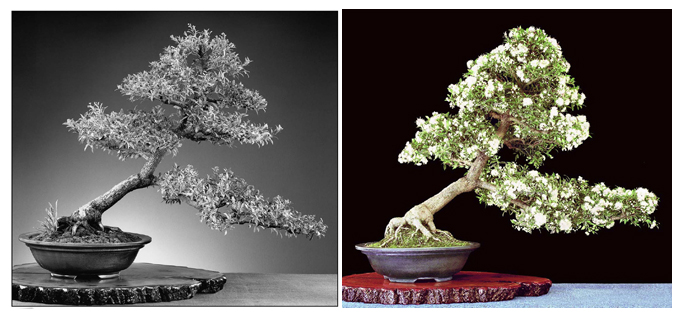 This photo, titled bonsai in black and white turned up on flickr. It was shot in December 2009 at the National Arboretum by Brian Hefele. He was using a Sigma DP2.
This photo, titled bonsai in black and white turned up on flickr. It was shot in December 2009 at the National Arboretum by Brian Hefele. He was using a Sigma DP2.
Bonsai Tool Sale
Just a quick heads up on our brand new Bonsai Tool Sale (includes all our bonsai tools and even turntables, sieves, toll rolls and some other tool-related items). The discounts are 10%, 15% or 20% on all Bonsai Tools, depending on how many you buy (sets count as 1 item). Check it out, I think you’ll find something you like.
Comments from Bonsai in Black & White part 1
In case you missed them, here are three of the comments from our last post. I think each one sheds some light (no pun intended) on our discussion of bonsai in black and white.
During the punic wars, when I was in college studying photography, … Freshman and Sophomore students were only permitted to work in black and white. It wasn’t until the Junior year that they were permitted to enroll in color photographic courses. The psychology was that while color adds a great deal to a photo, it can also be a great distraction from the more important things a photographer needs to learn such as composition, use of light and shadow, texture, lighting, manipulation of depth of field, etc, etc. First and second year students needed to master these aspects of the photographic art and in the beginning, color was considered too much of a “distraction” for beginners to have to deal with.
Randy Clark
All to often people convert their color images to black and white and feel that they turned a ok picture into something better. In my opinion black and white photography takes a much greater understanding of light. I agree that a good black and white photo would highlight things that would otherwise be missed. I think it has to do with creating a balanced overall image (light, contrast, tonal range) would add light detail to areas otherwise lost in shadow. As is displayed with your examples. The picture of the shimpaku picks up a lot of detail but the picture of the pemphis becomes flat. I think this is an interesting topic that delves into another art form. Light and composition make a photo and sometimes what works in color doesn’t necessarily convert to black and white without considerable effort (photoshop). But hey that is just my opinion. Cool post.
Matt Logan
In traditional film photography black and white films were available that had very distinct contrast and gray response that color film often did not. That is why many of the older photos showed such exquisite detail. In modern digital photography I think the closest you can get to that range of contrast is with HD techniques, using multiple exposures of the same subject, but those are usually used with contrasty colors for eye candy. I think a serious photographer that was after the older B&W film effect with a good grasp of HD photography would have an avid audience in the bonsai market.
Zack Clayton
 Two photos from an article titled THE CULTURE & TRAINING OF DWARF BRUSH CHERRY BONSAI that appeared in Bill Valavanis’ International Bonsai magazine. Color is clearly an advantage when it comes to flowers.
Two photos from an article titled THE CULTURE & TRAINING OF DWARF BRUSH CHERRY BONSAI that appeared in Bill Valavanis’ International Bonsai magazine. Color is clearly an advantage when it comes to flowers.
 Can you tell if this photo of Roshi Bonsai Tools was shot in black & white or color?
Can you tell if this photo of Roshi Bonsai Tools was shot in black & white or color?
I shot B&W film and developed it many years ago, but I never considered shooting my Bonsai’s with B&W. Now I see that could be an advantage to me when I’m trying to style my trees. I got caught up in the “color” images and am missing some of the important features of the trees. Thanks for bringing this option to light!
Hi Wayne
Your comment about the brush cherry is a instance of comparing “apples and oranges”. The photos of the trees were taken at different stages of development and in the seasons. One MIGHT come to a different conclusion is the two photos had been taken at the same time.
The great B&W American photographer, Ansel Adams, did not photgrahy bonsais (to my knowledge) but he did do many trees in the natural environment. To see some really good exemplars I would suggest that googling “ansel adams” and then searching the relevant websites for “trees”, There are spectacular images to be seen.
Hi Peter,
Sorry if I gave the wrong impression. I could see the photos weren’t shot at the same time, and just wanted to comment on how color works better than b&w when it comes to trees in bloom.
And yes, Ansel Adams truly elevated the art of b&w. Spectacular stuff.
The tools were shot in colour, or otherwise the image was colorised. Open a copy of the image in Photoshop, then in Image Mode change to Grayscale and discard colour info. Now compare with the original.